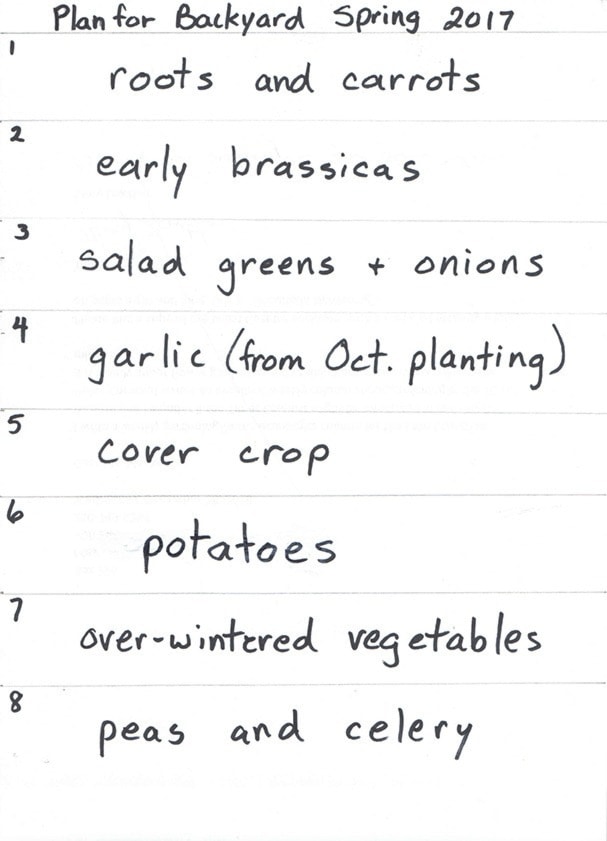It is possible to grow a pretty good garden without a plan and it may seem easier just to wing it, sowing seeds in likely spots. Actually, this laissez-faire method is more time-consuming in the long run and as growing season commences it soon becomes clear that there’s no room for crops you had intended to grow.
Time spent creating a plan now can make gardening easier in the future. Once you’ve decided what you want to grow and where you want the garden, look up planting and harvesting times for each crop so you can plan when and where to plant.
Gardening experts will tell you to locate taller plants like trellised beans and tomatoes at the north end of the garden so they won’t shade shorter crops. These same authorities suggest rotating crops to discourage diseases that may build up if vegetables were grown in the same place year after year. How do you rotate crops and keep the tall ones at the back at the same time?
You can’t. And here’s where garden planning helps: I plan my rotations so that plants that benefit from shade in midsummer, like lettuce and other greens, always grow in an adjacent bed just north of tall crops. As the crops rotate through the beds, the greens are always just north of the tall crops, until they move to the head of the bed again. One could also rotate them through the garden as a unit. Paths can add extra space between beds too.
Half my garden sits on the south side of the house and the other half on the east, so I have two rotation plans: one for the sunny south side and another for the less sunny east side. Plants that require lots of sun, like tomatoes, corn, cucumbers and peppers, fit nicely into a four-year rotation plan on the south side. Plants that will grow in less sun, like brassicas, peas, greens and onions, fit into an eight-year rotation plan on the east side.
But how does one fit garlic, which takes up space from October of one year to mid-July of the next? I scratched my head over this one until I realized that the plan had to work around the garlic bed. And then it dawned on me that I would need a plan for each season in order to accommodate the six-season occupation by garlic in one bed. Sound complicated? At first it seems that way, but once you start using cover crop in places where there’s no time for anything else to grow it’s easier because you put cover crops into the rotation. I’ll explain this a bit better in the next issue.
I found that once I had my plan finally figured out I was able to fit everything I wanted into the garden, it was more productive and I didn’t have to worry each year over where crops were going to go.
Please contact mary_lowther@yahoo.ca with questions and suggestions since I need all the help I can get.
